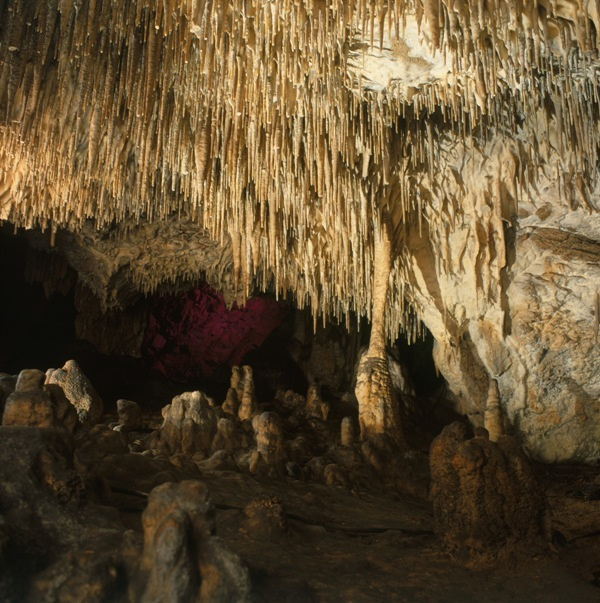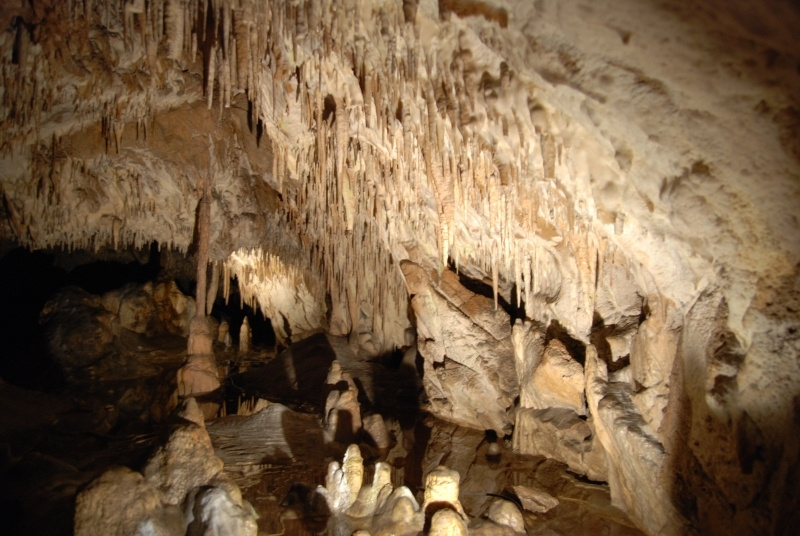Raj Cave

Raj Cave, also known as Paradise Cave, is a horizontal karstic limestone cave located inside the Malik hill, south of Kielce in the Witokrzyskie Voivodship of Poland. The cave is 240 meters long (790 feet) and has a vertical range of 9.5 meters (31 feet), however only a stretch of 180 meters (590 feet) and two entrances are exposed to visitors. Its rank as one of the biggest caves in Poland. It is considered one of Poland's most attractive caverns and draws a large number of tourists. Its tunnels lead to five rooms and caverns decorated with speleothems such as stalactites, stalagmites, and columns of calcified rock deposited over thousands of years.
A maximum of fifteen individuals accompanied by a guide are admitted inside the cave every fifteen minutes to maintain an internal temperature of 8 to 10 °C and 95 percent humidity essential to protect the cave's historical value and ecological integrity. The cave's archeological and paleontological discoveries, which include a reproduction of a Neanderthal camp, Mousterian assemblages, and petrified bones of contemporaneous Paleolithic species, are shown in an info center illuminated by optical fiber in front of the entrance.
Józef Kope and Feliks Wawrzeczak, students at a nearby technical school, found the cave in 1963. It was opened to the public in 1972 after intensive research and recording by geologists Tymoteusz Wróblewski and Zbigniew Rubinowski of the Polish Geological Institute's Witokrzyskie department.
The cave's five chambers were formed some 350 million years ago, during the Middle Devonian epoch. There are signs of Neanderthal occupation inside that date back 50 to 60 thousand years. At the site, remains and fossils of cave hyenas and cave bears, as well as innumerable bones of mammalian species such as Woolly rhinoceros and mammoths, were discovered.
Length: 240 m
Address: Dobrzączka, 26-060 Chęciny, Poland








